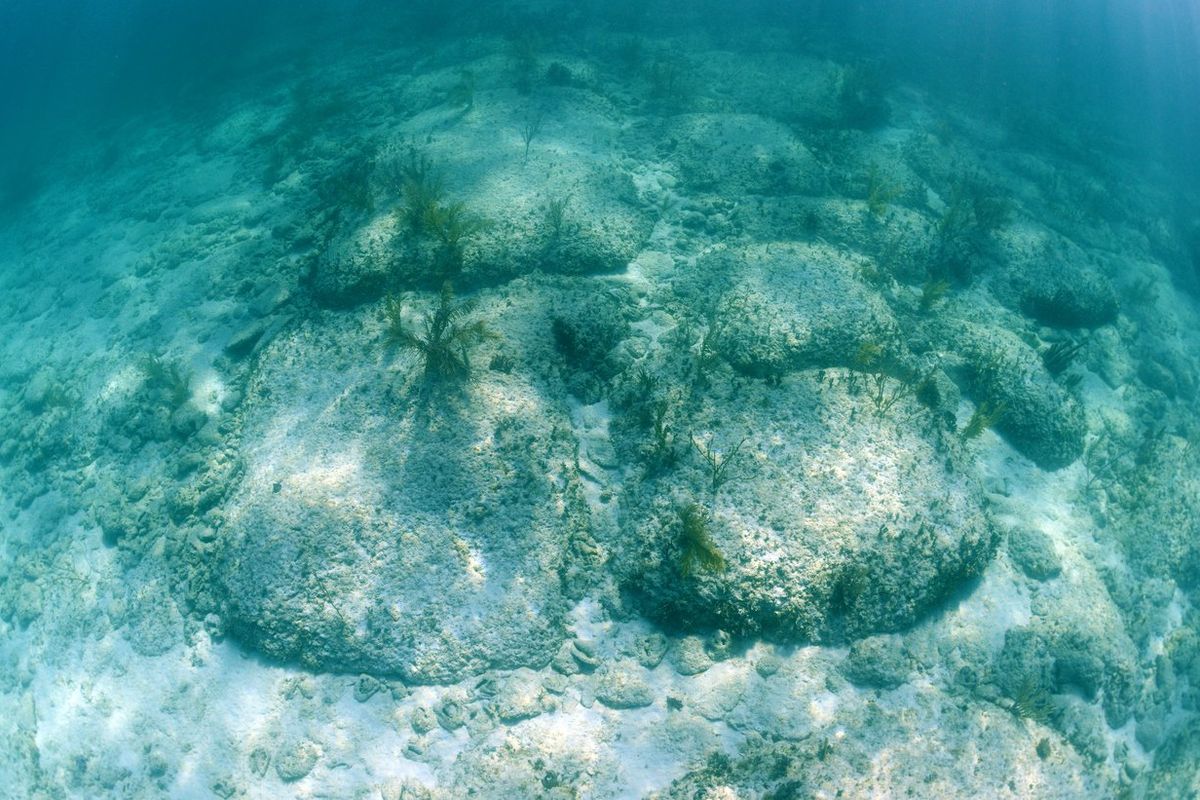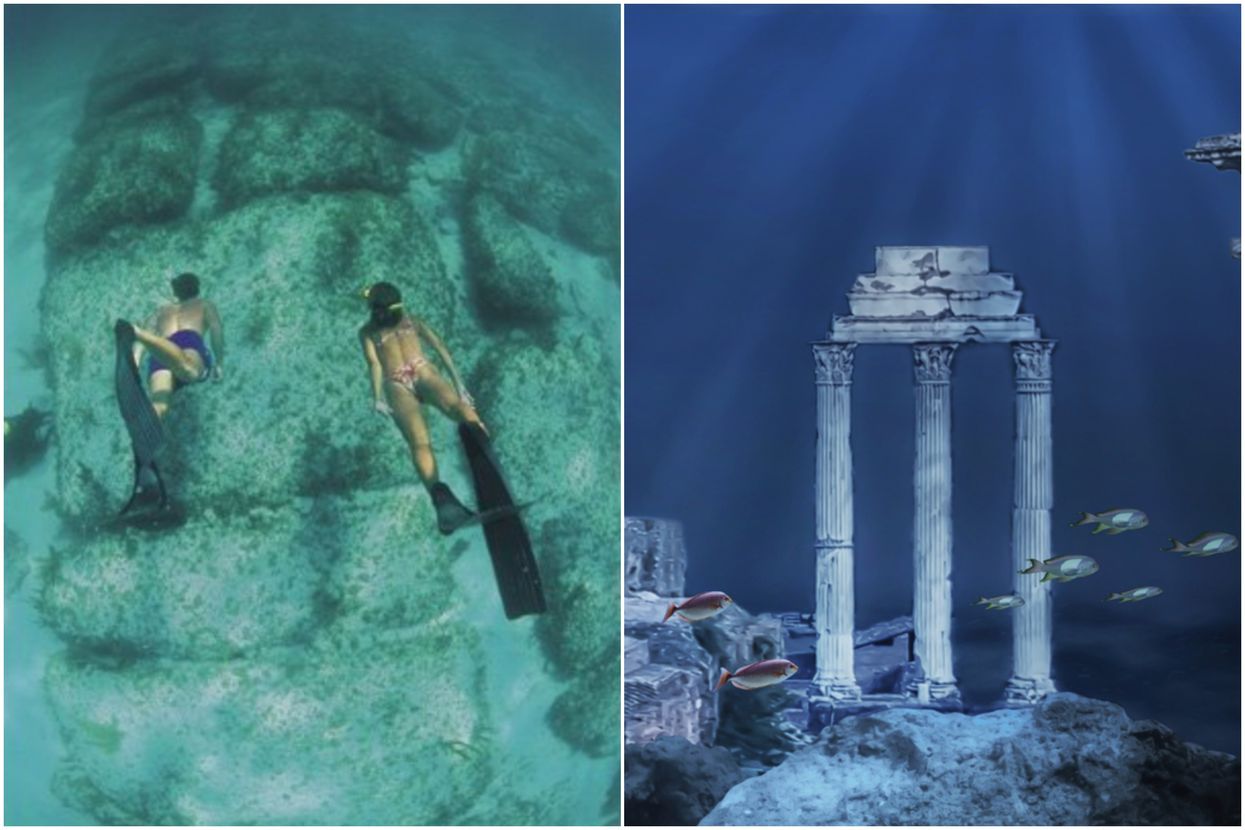The legend of Atlantis has endured for millennia, with experts and amateurs alike gripped by the prospect of a drowned civilisation.
Many have searched for clues in the depths of the world’s oceans, determined to identify the location of the fabled sunken land.
One such hotspot for Atlantis hunters is the so-called Bimini Road, located in waters west of the Bahamian islands of Bimini.
The underwater formation consists of rectangular limestone blocks which many observers have likened to a man-made wall or road (hence the name).
Indeed, some have taken the theory further, suggesting that it was once a highway to Atlantis itself.
So what actually is the Bimini Road? And why are people so convinced that there’s more to it than meets the eye?
What is Bimini Road?
The strange collection of stones was first discovered in September 1968 by subsea archaeologists Joseph Manson Valentine, Robert Angove, and Jacques Mayol.
The trio were diving at depths of 5.5 metres (18 feet) off the northwest coast of North Bimini when they chanced upon what they described as a “pavement” of stones.
The rocks, of varying sizes and thickness, almost look as though they’re part of an ancient, cobbled track, running in a near-perfectly straight line for around 460 metres (1,500 feet) before ending in a curved hook.
Consisting of large, rectangular blocks of beachrock, each of which measures up to four metres (13 feet) in length, Bimini Road also runs parallel to two similar, smaller paths.
Strikingly, some of the larger blocks look as though they were intentionally cut into right angles before being smoothed by natural erosion over time.
This all led myth-lovers to suggest that the “road” was once part of an ancient settlement, and that it led to the seat of a now-lost civilisation; namely Atlantis.

Why Atlantis?
Whilst many researchers swiftly concluded that the Bimini Road was a natural phenomenon, others viewed the strange cobbles as evidence of the mythical sunken island, hoping that it might lead to the ruins of the "lost civilisation” itself.
Perhaps most compellingly for these believers was the fact that a mystic named Edgar Cayce seemingly predicted the road’s existence four decades earlier with incredible accuracy, and linked it to Atlantis.
Cayce, a spiritual “healer” in the 1930s and ’40s, built a career on performing psychic readings and predictions, as geologist Eugene A. Shinn wrote in a 2004 piece for the Skeptical Inquirer.
In 1938, he reportedly predicted that ancient records concerning mysterious energy crystals were located “in the sunken portions of Atlantis”.
He said these could be found “where a portion of the temples may yet be discovered, under the slime of ages and sea water near Bimini,” adding that these would be uncovered in “[1968] or ’69 – not so far away.”
This was, amazingly, 30 years before Bimini Road was uncovered… in 1968.
Seizing on Cayce’s prophecy, Atlantis followers flocked to the site upon its discovery, digging up further “evidence” of its connection to the fabled city.
They pointed to the fact that the road is located in the Bermuda Triangle, which has long been steeped in supernatural associations of its own, as All That’s Interesting (ATI) reports.
In his 2004 article, Shinn also described Bimini Road as emitting a certain special “aura”, which some people call a “force field.”
Indeed, Bimini’s alleged paranormal powers were even endorsed by Ernest Hemingway’s brother Leicester, who reportedly claimed that he’d found the fountain of youth on the island and that it had cured his cancer.
In addition, local authorities have seized on Bimini's ties to Atlantis, with the 'Islands of Bahamas' tourist website boasting: "It is believed that [Bimini Road] was part of the road system of the Lost Continent of Atlantis."
It goes on: "According to some researchers, the site is completely identical in design to a known harbor and installations submerged in the Mediterranean, which indicates they were built in the same period by the same seafaring people."

What does the science tell us?
Shinn was among a number of scientists who studied Bimini Road in the mid-1970s by drilling down and extracting pieces of the boulders for analysis.
In so doing, researchers learnt that the stones were made of beachrock, which forms beneath the sand on beaches.
As ocean levels rise or beaches erode, this rock becomes submerged in water which can cause it to break apart, giving it a cobblestone-like appearance, ATI notes.
This process, Shinn said, not any form of human endeavour, is behind the formation of the so-called road.
His team’s analysis revealed that “there were no artefacts, no wheel ruts, or any other evidence of an ancient civilisation” and no signs that “the stones had been placed by humans.”
Furthermore, radiocarbon dating of the Bimini samples also showed that the rocks were between 2,000 and 4,000 years old. This is a long way off the purported age of Atlantis, which Plato claimed existed 10,000 years before he wrote about the mythical land in around 360 BC.
And if that wasn’t proof enough, it’s also worth noting that the location of Bimini Road doesn’t match Plato’s description of the sunken island’s location, which he claimed once stood in the Atlantic Ocean near the Strait of Gibraltar.
Still, no matter what the likes of Shinn say, believers are always going to see truth in their own theories.
For example, in the 2022 Netflix series ‘Ancient Apocalypse’, British writer Graham Hancock visits Bimini Road to explore whether it could have been built by an advanced lost ice age civilisation.
His conclusion? It’s possible.
But then again, isn’t almost anything?
Sign up for our free Indy100 weekly newsletter
How to join the indy100's free WhatsApp channel
Have your say in our news democracy. Click the upvote icon at the top of the page to help raise this article through the indy100 rankings














